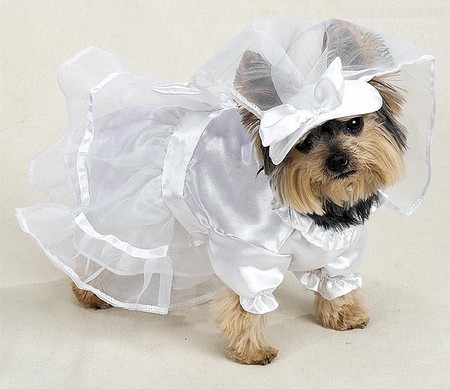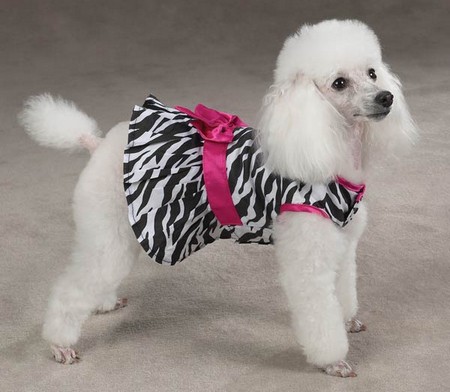Now there are head halters, no-pull harnesses, extendible leads and shock collars. So many choices cause concern. After all, the wrong equipment may be ineffective or, worse, inhumane. Lots of these devices come with the guarantee that they will make the job easier, practically no work at all.
When something sounds too good to be true, it usually is. Caveat emptor. Experience has shown me that as heavier or more complicated equipment is used—the prong collar and head halter, for example—the tendency is to rely on the gear for help rather than to work on the relationship. Yet what I’ve seen in my training work is that the relationship is precisely what needs fixing. This is accomplished best and most quickly through improving the communication between master and dog, not by adding more paraphernalia.
Preparation
When professional trainers or pet owners rely on more equipment and more complicated equipment, they simply do not get the job done. Instead of winning the dog’s attention and respect, instead of improving the quality of communication, equipment—much of which is meant to be used temporarily—is used permanently. In other words, the owner is relying on stuff rather than finding ways to engage the dog’s mind.
My own belief is that the dog should understand everything that is happening to him, just as he did when his mother taught him the basic lessons of puppyhood. Therefore, in order to correct my dog, I never throw anything at him but my voice. I never zap a dog with electricity or stun him with noise. I don’t use devices to get a dog’s attention or keep him off my furniture.
Like any dog’s first teacher, his mother, my most important training aids are confidence, affection, a willingness to set limits and the habit of concentrating fully on the task at hand. Because the dog himself is old-fashioned, understanding his world and behaving much in the way that dogs always have, I am content with old-fashioned equipment—basically, a collar and leash. By choosing a minimum of equipment, I keep the dog’s focus, and my own, on our relationship.
In addition, the proper equipment should increase the possibility of good communication, should never leave the dog confused as to the source of praise and correction, should augment understanding between owner and dog and should help decrease, never increase, stress in the dog.
So when yet another new device comes on the market, I ask myself, how much stuff should I need in order to get my dog to pay attention to me and obey a few simple commands? This said, here is all you need to train your dog:
A basic buckle collar, with ID, should be worn by your dog when he is loose in the house and you are home, as well as anytime he is outside. A dog without a collar is difficult to correct, should a correction be necessary. But even for the near perfect dog, the feel and weight of a collar are a reminder of a dog’s secure, loved position as an appropriately subordinate pack member.
A nylon slip collar is ideal for training all dogs, big and small, with the exception of toy breeds and any dog with a diagnosed medical condition that precludes even the slightest pressure on his neck. The nylon collar, slipped high on the neck, allows for the smallest of corrections to be highly effective.
A four- or six-foot leather leash is handsome, durable and easy on the hands. For all but advanced training situations, it is preferable to have the dog close rather than far away.
Categories
Advertisements
Recent Articles
 How to Understand Bed Sizes – A Small Guide
How to Understand Bed Sizes – A Small Guide How to Select Some Must Have Kitchen Accessories
How to Select Some Must Have Kitchen Accessories Best Way to Change a Car Tire
Best Way to Change a Car Tire Best Way to Write an Affirmation
Best Way to Write an Affirmation Best Way to Take Charge of Your Financial Life
Best Way to Take Charge of Your Financial Life Best Way to Survive a Party When You Don’t Know Anyone
Best Way to Survive a Party When You Don’t Know Anyone Best Way to Stop Self Sabotaging Yourself
Best Way to Stop Self Sabotaging Yourself Best Way to Start Journal Writing
Best Way to Start Journal Writing Best Way to Speak with a Powerful Voice
Best Way to Speak with a Powerful Voice Best Way to Simplify Your Life
Best Way to Simplify Your Life Best Way to Respond to a Put-Down
Best Way to Respond to a Put-Down Best Way to Reduce Acne Breakouts
Best Way to Reduce Acne Breakouts Best Way to Recover from Dining Disasters
Best Way to Recover from Dining Disasters Best Way to Quit Your Job Gracefully
Best Way to Quit Your Job Gracefully Best Way to Make Your Own Website
Best Way to Make Your Own Website



Leave a Reply